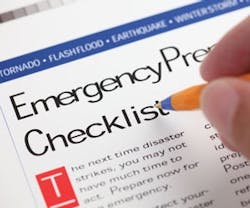Disaster Planning Means Business
According to FEMA, 40% of businesses struck by a disaster never reopen, and of those that do, 25% permanently close within two years.
“Businesses and schools may face a number of emergencies that could disrupt their operations, including hurricanes, floods, power outages, and flu outbreaks,” says David Markenson, chair of the American Red Cross Scientific Advisory Council. “Organizations should prepare ahead of time so people will know what to do and have what they need during a crisis.”
In a continued effort to promote disaster preparedness, the American Red Cross and Grainger, a leading distributor of maintenance, repair and operating products, share practical tips to help businesses get prepared.
- Compile supply kits. As part of planning, distribute emergency kits with basic supplies needed to keep employees warm, dry, and hydrated, including items to treat minor injuries.
- Train employees. While preparing your business is important, any emergency planning first starts with personal preparedness. First aid and CPR/AED training for your staff or tenants are great starting points.
- Establish partners. Create local partnerships that include key organizations such as police, fire, Red Cross, FEMA, utilities, skilled trades, and local emergency planning officials. In the event of an emergency, you can depend on this valuable network.
- Practice the plan. Simply having a plan is not enough. Create opportunities for employees to test the plan by holding mock drills and emergency simulations.
“While all businesses are at risk for emergencies,” says Patti Julius, marketing strategy manager of emergency preparedness for Grainger, “the potential loss and speed to ‘return to normal’ can be reduced by effective planning before disaster strikes.”
